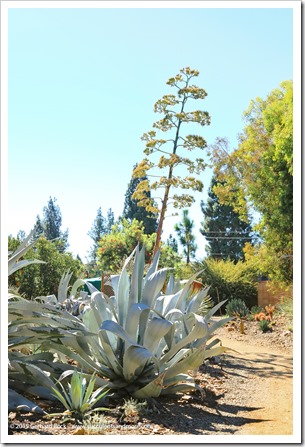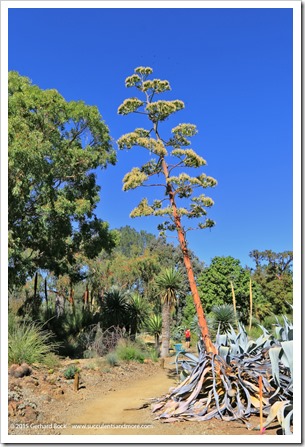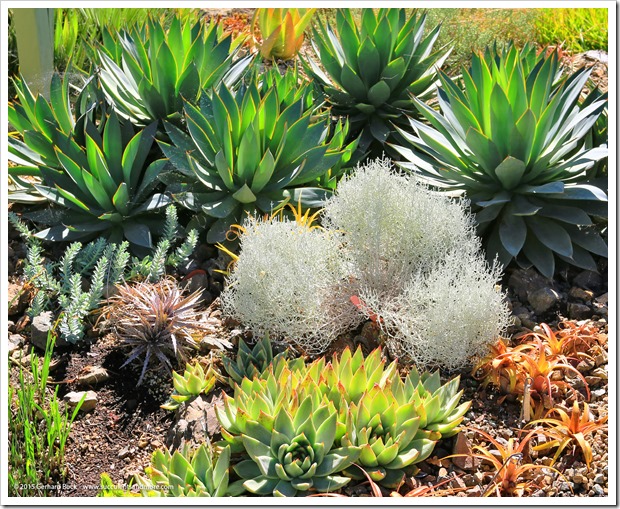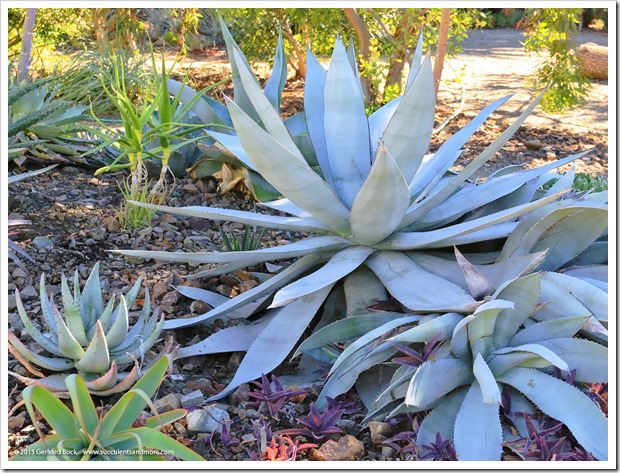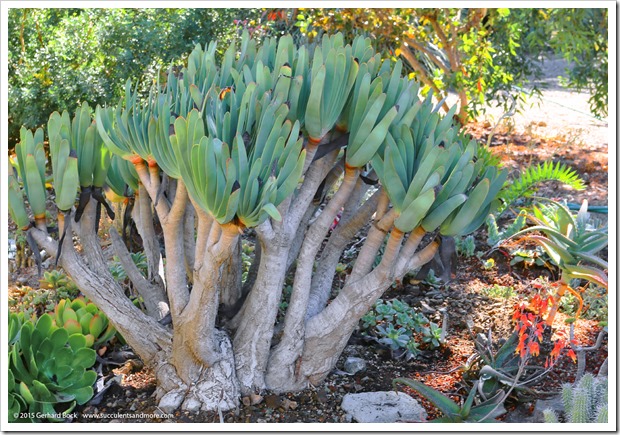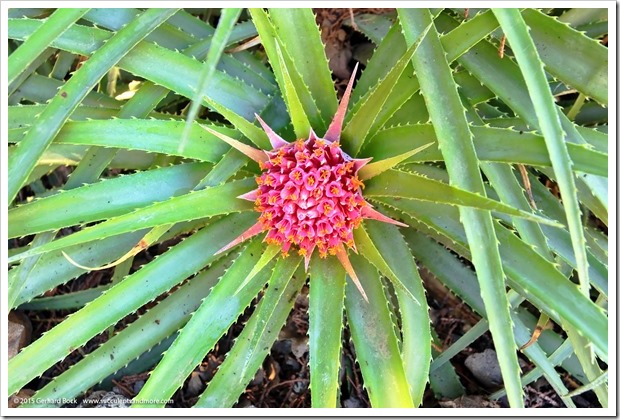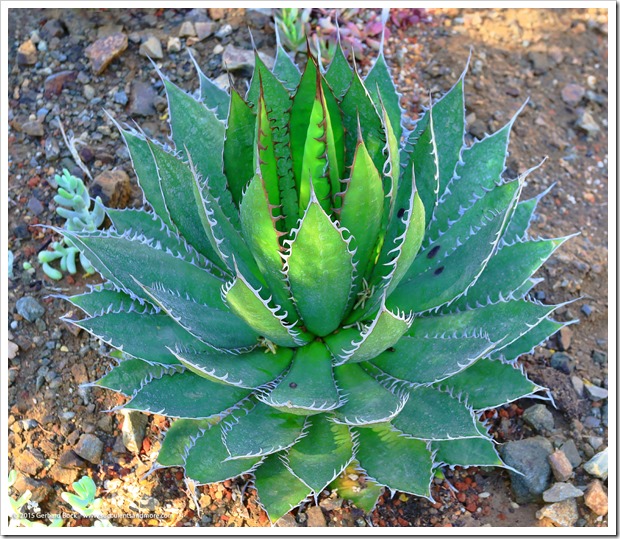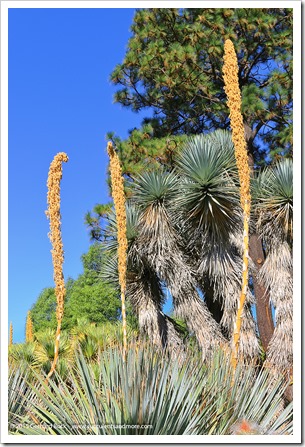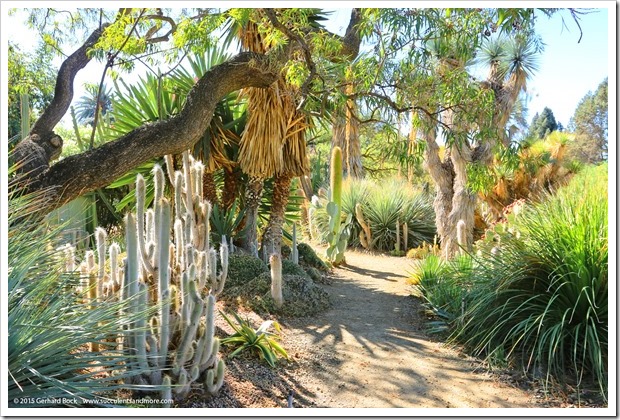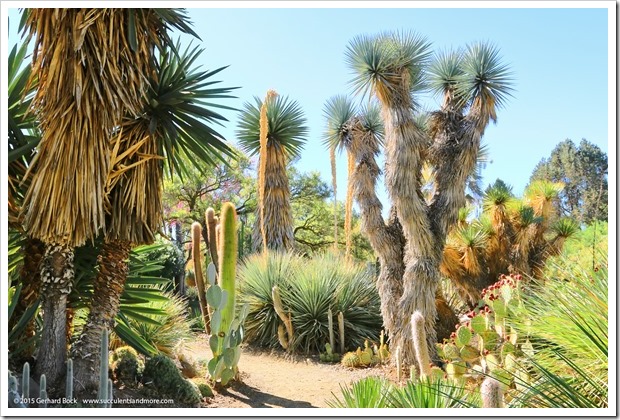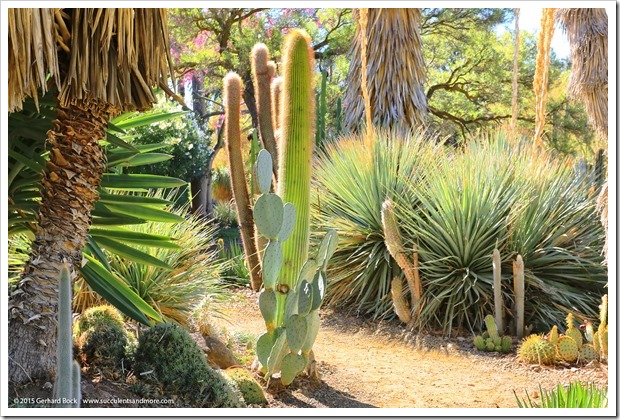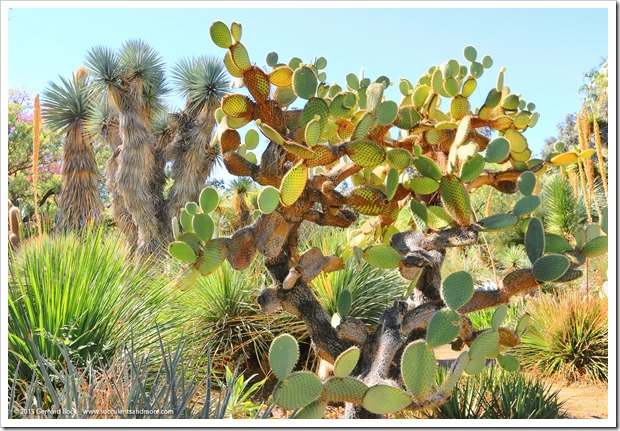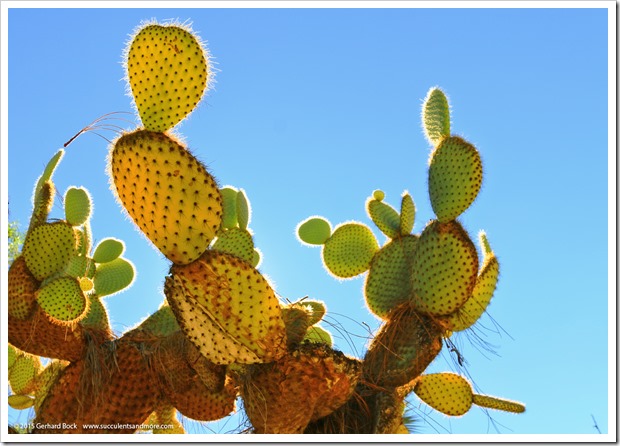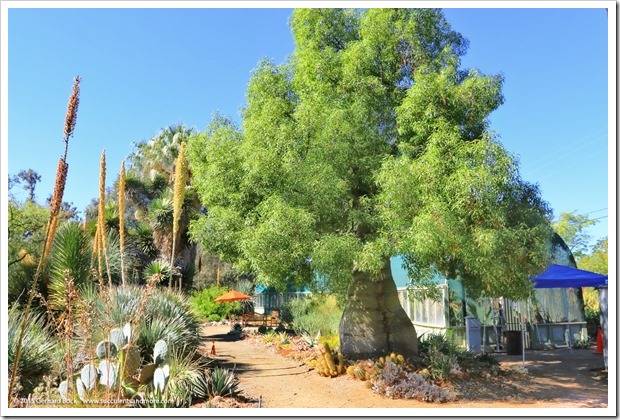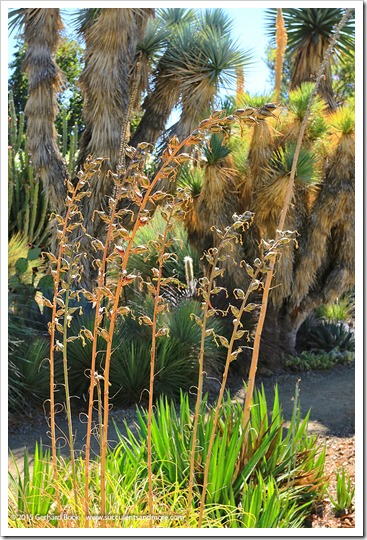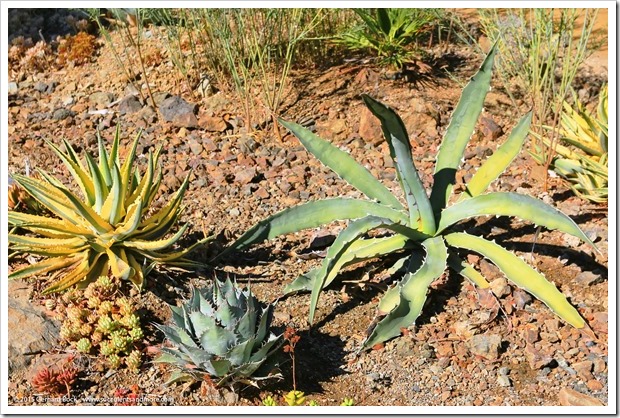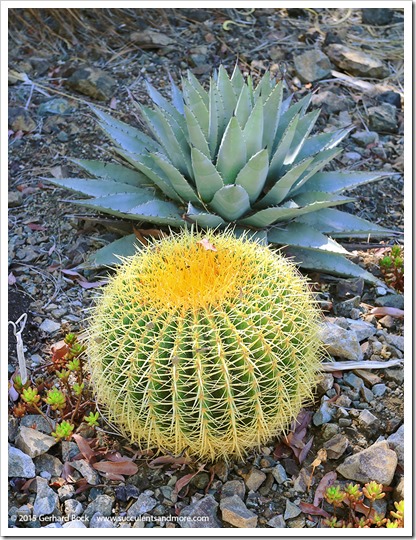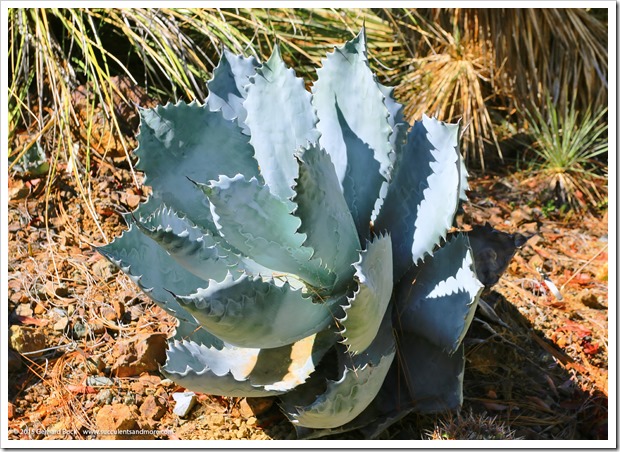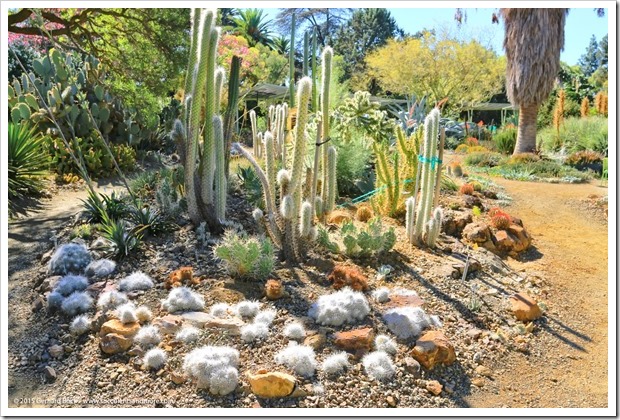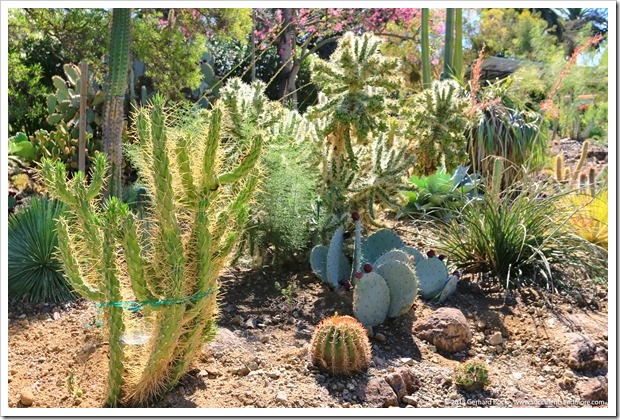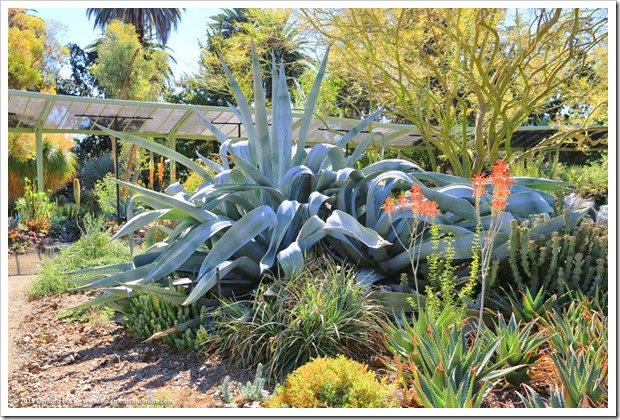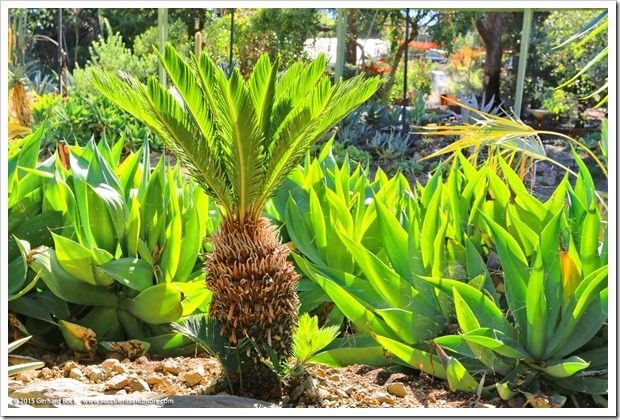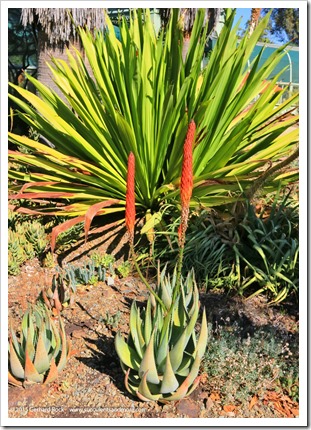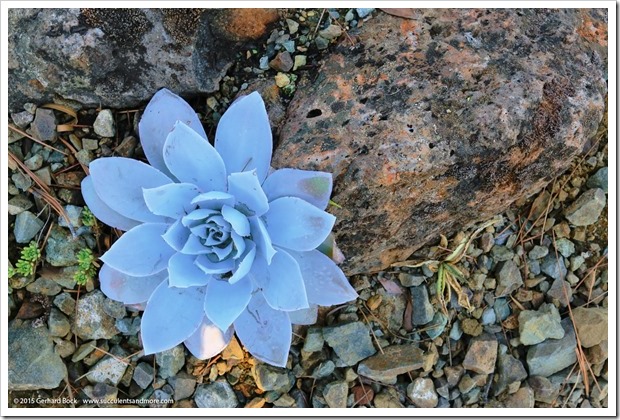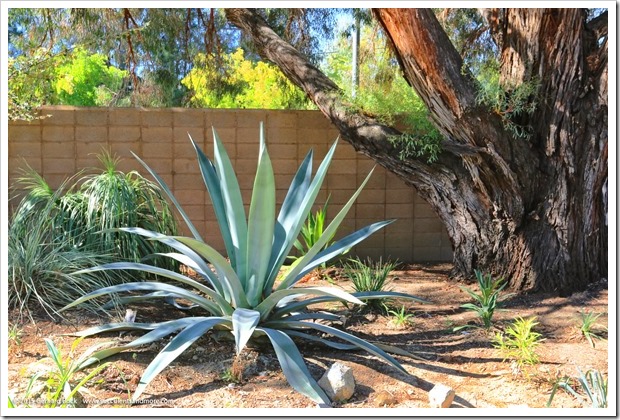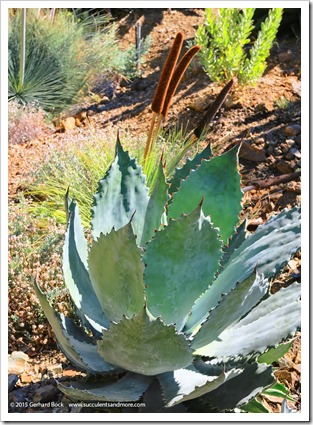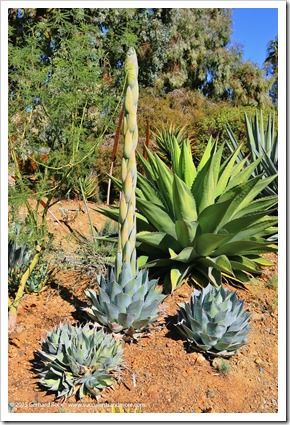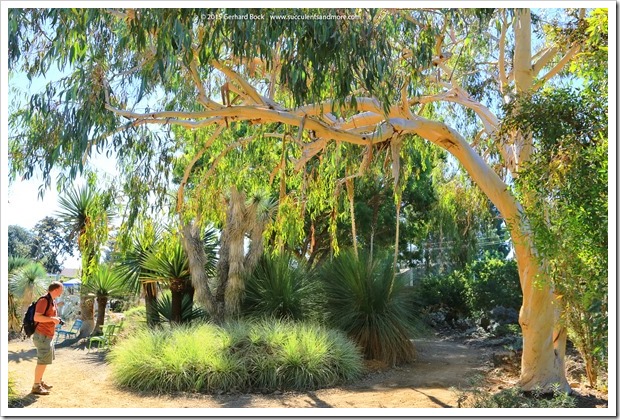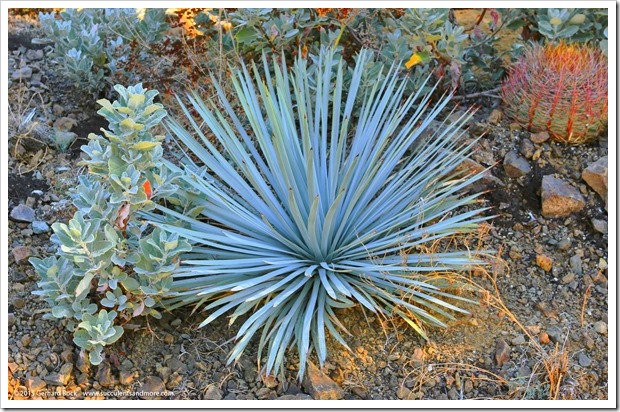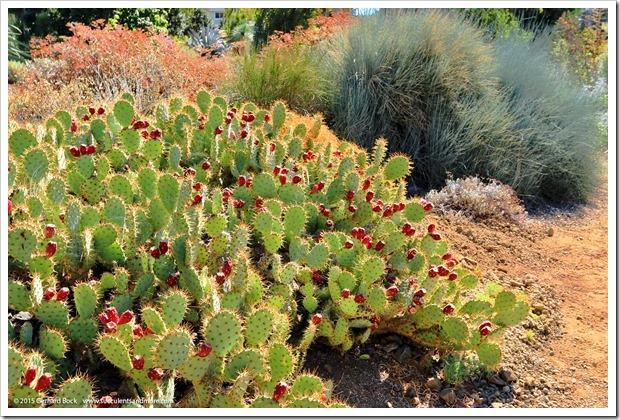It’s become a tradition now: At each Ruth Bancroft Garden plant sale, I first pick out the plants I want, then I stroll through the garden to see what’s new and revisit old favorites.
It was no different last Saturday. Since I had to get raffle plants for the Sacramento Cactus & Succulent Society, I spent even more time than usual looking at all the plants. Plus, I had nice chats with RBG staff, including nursery manager Troy McGregor and garden curator Brian Kemble, and with Kathy Stoner who blogs at http://gardenbook-ks.blogspot.com/. I was hoping I’d run into Kathy, and I did. One of these days I’ll make it to Napa to see her garden.
My stroll begins at the large clump of Agave franzosinii near the porta-potty and follows no particular route. “Wandering about aimlessly” would we be a good description. For this reason, the photos below are in no particular order, but that should heighten the sense of discovery.
Enjoy!
Agave franzosinii with a flower stalk the size of a small tree. Agave franzosinii is one the largest agave species. It can grow up to 8 ft. tall and 10 ft. wide.
Agave parrasana. This specimen in the bed near the information kiosk outside the office is particularly striking.
Agave ‘Blue Glow’ and Leucophyta brownii (the silvery clumps that look like tumbleweed). I think this is a very effective combination.
Agave titanota (the real deal from Rancho Tambor as described by Howard Gentry)
Mature fan aloe ( Kumara plicatilis)
Ochagavia litoralis, a terrestrial bromeliad from Chile (hardy to 20°F, too!). Check out this write-up on the RBG web site if you’re interested in this rarely seen plant.
Ochagavia litoralis flower
Agave victoria-reginae
Agave nickelsiae. Formerly known as Agave ferdinandi-regis, this is a close relative of Agave victoria-reginae.
Labeled Agave verschaffelti, a synonym for Agave potatorum
Agave horrida
Possibly Aloe fosteri
Silk floss tree ( Ceiba speciosa) and palo verde ( Parkinsonia sp.)
Silk floss tree ( Ceiba speciosa)
LEFT: Flower spikes from Dasylirion wheeleri RIGHT: Old man of the Andes (Oreocereus celsianus)?
One of my favorite spots in the garden
This prickly pear looks like a sculpture!
Close-up
Queensland bottle tree ( Brachychiton rupestris)
Dyckia seed pods
Palm tree seedling growing among a clump of prickly pears
Agave trio: (from l to r) Agave ‘Cornelius’, Agave parrasana, Agave xylonacantha
Golden barrel cactus ( Echinocactus grusonii) in front of NOID agave
Agave colorata
Agave titanota, much greener than the alabaster white form you saw above
Cactus bed
More cactus
Yucca ‘Bright Star’ on the edge of another cactus bed
Agave franzosinii
Cycad in front of a row of Agave mitis
LEFT: Aloe reitzii RIGHT: NOID Gasteria
Ponytail palm ( Beaucarnea recurvata)
Great place to sit for a spell, especially if you’re blue :-)
Echeveria cante
Agave weberi, the “gentlest” of the larger agaves (the leaves are virtually toothless)
Dwarf grass tree ( Xanthorrhoea nana)
LEFT: Agave colorata × parrasana RIGHT: Agave parrasana with an emerging flower stalk
Majestic snow gum ( Eucalyptus pauciflora)
Our Lord’s candle ( Hesperoyucca whipplei), arguably the most striking succulent native to California
Fruit-laden pricky pears ( Opuntia sp.)
The next plant sale at the Ruth Bancroft Garden won’t be until next April, but the garden (and the nursery!) is open Tuesday through Sunday from 10am to 4pm. The nursery is well stocked year round and offers one of the best selections of succulents and southern hemisphere plants anywhere in Northern California.
